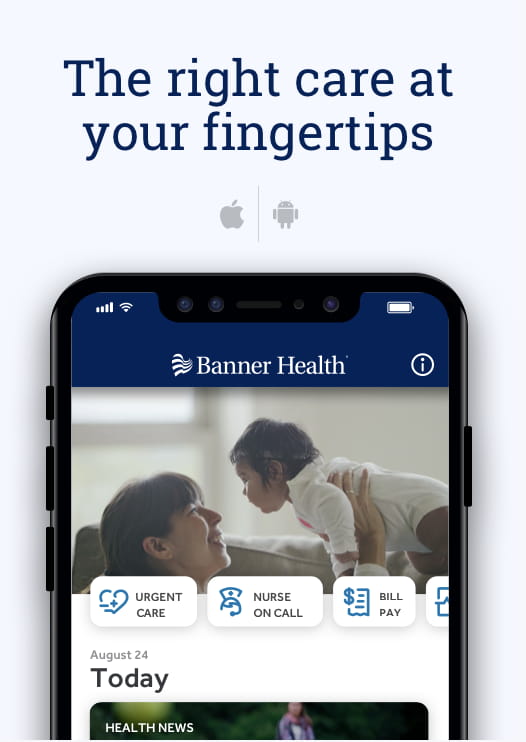En un momento, tu hijo está de pie, cantando en el coro. Al siguiente, se desploma en el suelo. Ver a tu hijo desmayarse puede ser aterrador para un padre. Es difícil no entrar en pánico cuando sucede.
Aunque el desmayo parece aterrador, una de las causas más comunes en niños es el síncope vasovagal. Parece complicado, pero suele ser inofensivo.
Desglosamos cinco cosas que debe saber sobre el síncope vasovagal en niños, incluidos consejos para evitar episodios futuros.
¿Qué es el síncope vasovagal?
El síncope vasovagal es un tipo de desmayo que ocurre cuando la frecuencia cardíaca y la presión sangre de su hijo bajan repentinamente. Esto reduce el flujo sangre al cerebro y provoca una pérdida de consciencia (desmayo) breve.
El síncope vasovagal, también llamado respuesta vasovagal o síncope reflejo, es la causa más común de desmayos en niños, adolescentes y adultos. Aproximadamente el 15 % de los niños se desmaya al menos una vez antes de llegar a la edad adulta.
“El nervio vago, que ayuda a controlar la relajación del cuerpo, desempeña un papel fundamental”, afirmó la Doctor.Alice Antonescu , pediatra de Banner Health. “Cuando ciertas situaciones lo estimulan, este envía señales a los vasos sangre para que se dilaten y al corazón para que disminuya su ritmo cardíaco. Con una frecuencia cardíaca lenta y vasos sangre dilatados, llega menos sangre al cerebro y pueden producirse desmayos”.
¿Qué causa el síncope vasovagal?
Hay muchos factores que pueden desencadenar un desmayo. Algunos de los desencadenantes más comunes incluyen:
- Permanecer quieto durante demasiado tiempo (como durante eventos escolares o ensayos del coro)
- Exposición al calor, especialmente en lugares concurridos o sofocantes
- Estrés emocional como miedo, ansiedad o ver sangre.
- Dolor por cosas como inyecciones o lesiones.
- Deshidratación por no beber suficiente agua
- Saltarse comidas, lo que provoca niveles bajos de azúcar en sangre
- Fatiga y agotamiento
En algunos casos raros, los desmayos pueden ser señal de un problema médico. Algunas afecciones pueden causar desmayos, como:
- Problemas cardíacos
- Afecciones neurológicas o convulsiones
- Anemia
- Presión sangre baja (hipotensión)
- POTS (síndrome de taquicardia ortostática postural)
Hable con el proveedor de atención médica de su hijo, especialmente si se desmaya más de una vez, durante el ejercicio o sin una razón clara.
¿Existen señales de advertencia antes de que se produzca un desmayo?
Los niños pueden presentar síntomas antes de desmayarse. Reconocer estas señales de advertencia puede ayudarle a actuar con rapidez y posiblemente prevenir un desmayo.
Las señales a las que debemos prestar atención incluyen:
- Sentirse mareado o aturdido
- Piel sudorosa o húmeda
- Visión borrosa o ver manchas
- Náuseas o malestar estomacal
- Escuchar zumbidos o pitidos
- Una cara pálida o grisácea
- Debilidad o temblores
- Sensación de mucho calor o mucho frío
Anime a su hijo a hablar si siente estos signos, especialmente en lugares calurosos o concurridos.
¿Qué debo hacer si mi hijo se desmaya?
Aunque el síncope vasovagal no suele ser peligroso, es importante actuar con rapidez cuando su hijo se desmaya para protegerlo. Estos son los pasos a seguir:
- Mantén la calma: Respira hondo. Lo más probable es que tu hijo se despierte en uno o dos minutos.
- Acueste a su hijo con cuidado: si ya se ha caído, asegúrese de que esté boca arriba. Si aún está erguido pero se siente débil, ayúdelo a recostarse. "Permítale recostarse de 10 a 15 minutos", dijo el Dr. Antonescu.
- Elevar las piernas: Levantar las piernas ligeramente por encima del nivel del corazón. Esto facilita el retorno del flujo sangre al cerebro con mayor rapidez.
- Revise su respiración: Asegúrese de que respire con normalidad. Si su respiración suena extraña o no se despierta en un minuto, llame al 911.
- Afloje la ropa ajustada: desabroche cuellos apretados o afloje cinturones para mejorar la comodidad y el flujo de aire.
- Déjalo descansar: Una vez que tu hijo esté despierto, anímalo a que se quede quieto unos minutos y luego se incorpore lentamente. Ofrécele agua y deja que se recupere antes de ponerse de pie de nuevo.
La mayoría de los niños se despiertan rápidamente y se sienten mejor después de descansar. Llame al médico si es la primera vez que se desmaya o si le sucede de nuevo.
“Si bien el síncope vasovagal es común, siempre es recomendable descartar otras causas”, dijo el Dr. Antonescu. “El médico revisará su historial médico, le tomará la presión sangre y podría recomendar un electrocardiograma (una prueba del ritmo cardíaco) o una prueba de mesa basculante (una prueba que evalúa cómo responden el corazón y la presión sangre a los cambios de posición)”.
Busque atención de emergencia si:
- Su hijo sufre una convulsión después de desmayarse.
- No se despiertan después de unos minutos.
- Se desmayan durante el ejercicio o la actividad física.
- Tienen latidos cardíacos irregulares.
- Tienen dolores en el pecho o dificultad para respirar.
¿Se puede prevenir el síncope vasovagal?
Sí, a menudo se puede prevenir. Aquí hay algunas maneras de reducir las probabilidades de que ocurra:
- Mantenga a su hijo hidratado: “ Anímelo a beber agua durante todo el día, especialmente cuando hace calor o cuando practica deportes”, dijo el Dr. Antonescu.
- No se salte comidas: Recuérdele que coma sus comidas y refrigerios con regularidad. Un nivel bajo de azúcar en la sangre puede provocar desmayos.
- Evite permanecer de pie durante largos períodos sin moverse: si su hijo debe permanecer de pie, puede cambiar su peso de un lado a otro, doblar las rodillas o marchar en el mismo lugar para mantener el flujo sangre .
- Maneje el estrés emocional: Hable sobre sus miedos o ansiedades y practique la respiración profunda para mantener la calma.
- Enséñeles a reconocer las señales de advertencia: si se sienten mareados o enfermo, deben sentarse o acostarse inmediatamente.
El médico de su hijo podría sugerir cambios en el estilo de vida, como añadir más sal a la dieta o usar medias de compresión. Estas medidas ayudan a mantener la presión sangre estable. Siempre consulte con el médico antes de realizar cualquier cambio.
Reflexiones finales
Nunca es agradable presenciar un desmayo, especialmente cuando se trata de tu hijo. Pero en muchos casos, el síncope vasovagal es más aterrador que peligroso. Al aprender qué lo causa, detectar las primeras señales y ayudar a tu hijo a tomar pequeñas medidas para prevenirlo, puedes proteger su seguridad y darte tranquilidad.
A medida que su hijo crece, es posible que tenga menos episodios o que deje de desmayarse por completo. Hasta entonces, manténgase en contacto con el médico de su hijo o con un especialista de Banner Health .


